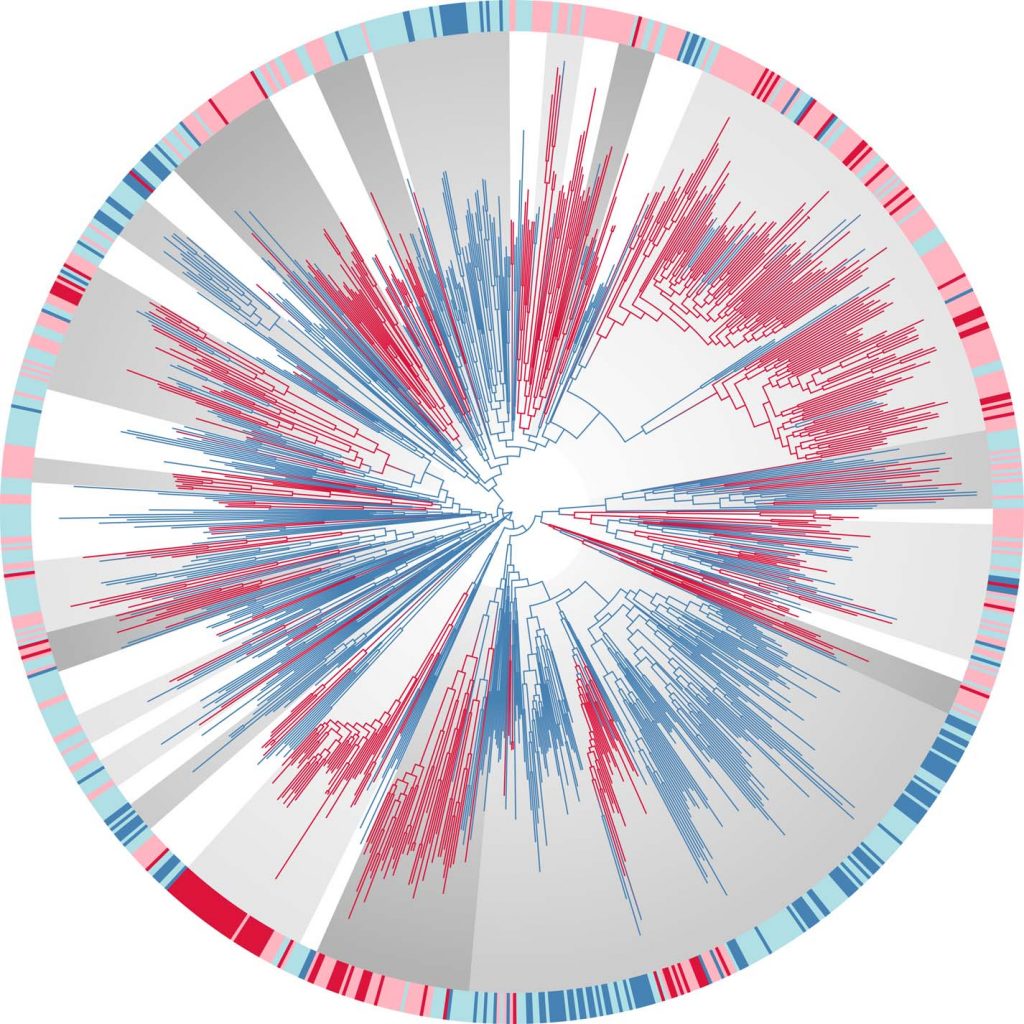Exploring the history of bacteria evolution
In a new study published in “Science”, an international team of scientists presents a reconstruction of the evolution of Earth’s bacterial biosphere over the past 4 billion years. HITS researcher Benoit Morel was among the authors, who used molecular clocks, machine learning, and phylogenetic reconciliation.

Microbial life dominates the biosphere, but a timescale of early microbial evolution has proven elusive as a result of an inadequate fossil record. The lack of maximum age calibrations—the earliest point in time at which a given group might have emerged—is particularly problematic. However, the geochemical record bears the imprint of microbial metabolism through time, providing a complementary source of information. A pivotal event in this history was the Great Oxidation Event (GOE) ~2.43 to 2.33 billion years ago, which marked a substantial increase in atmospheric oxygen. This transition, driven by the evolution of cyanobacterial oxygenic photosynthesis and carbon burial, transformed the biosphere from predominantly anoxic to oxic, causing widespread adaptation to oxygen.
An international team led by researchers from Eötvös Loránd University explored this early period, using the temporal link between atmospheric oxygenation and the evolutionary spread of aerobic metabolism to calibrate the phylogeny of the bacterial domain.
HITS researcher Benoit Morel (Computational Molecular Evolution group) contributed to the study by developing software to infer horizontal gene transfers between ancestral species and to estimate the timing of these events. The analyses he performed using this tool were instrumental in determining the chronology of the biological processes explored in the publication.
The study results show that the earliest aerobic bacteria emerged in the Archaean, predating the GOE by 900 million years. The approach developed by the team provides a framework for linking microbial traits to Earth’s geochemical history, offering a pathway for exploring the evolution of other phenotypes in the context of Earth’s history.
Davin A et al.: A geological timescale for bacterial evolution and oxygen adaptation. In: Science, 4 Apr 2025, Vol 388, Issue 6742. DOI: 10.1126/science.adp185
About HITS
HITS, the Heidelberg Institute for Theoretical Studies, was established in 2010 by physicist and SAP co-founder Klaus Tschira (1940-2015) and the Klaus Tschira Foundation as a private, non-profit research institute. HITS conducts basic research in the natural, mathematical, and computer sciences. Major research directions include complex simulations across scales, making sense of data, and enabling science via computational research. Application areas range from molecular biology to astrophysics. An essential characteristic of the Institute is interdisciplinarity, implemented in numerous cross-group and cross-disciplinary projects. The base funding of HITS is provided by the Klaus Tschira Foundation.